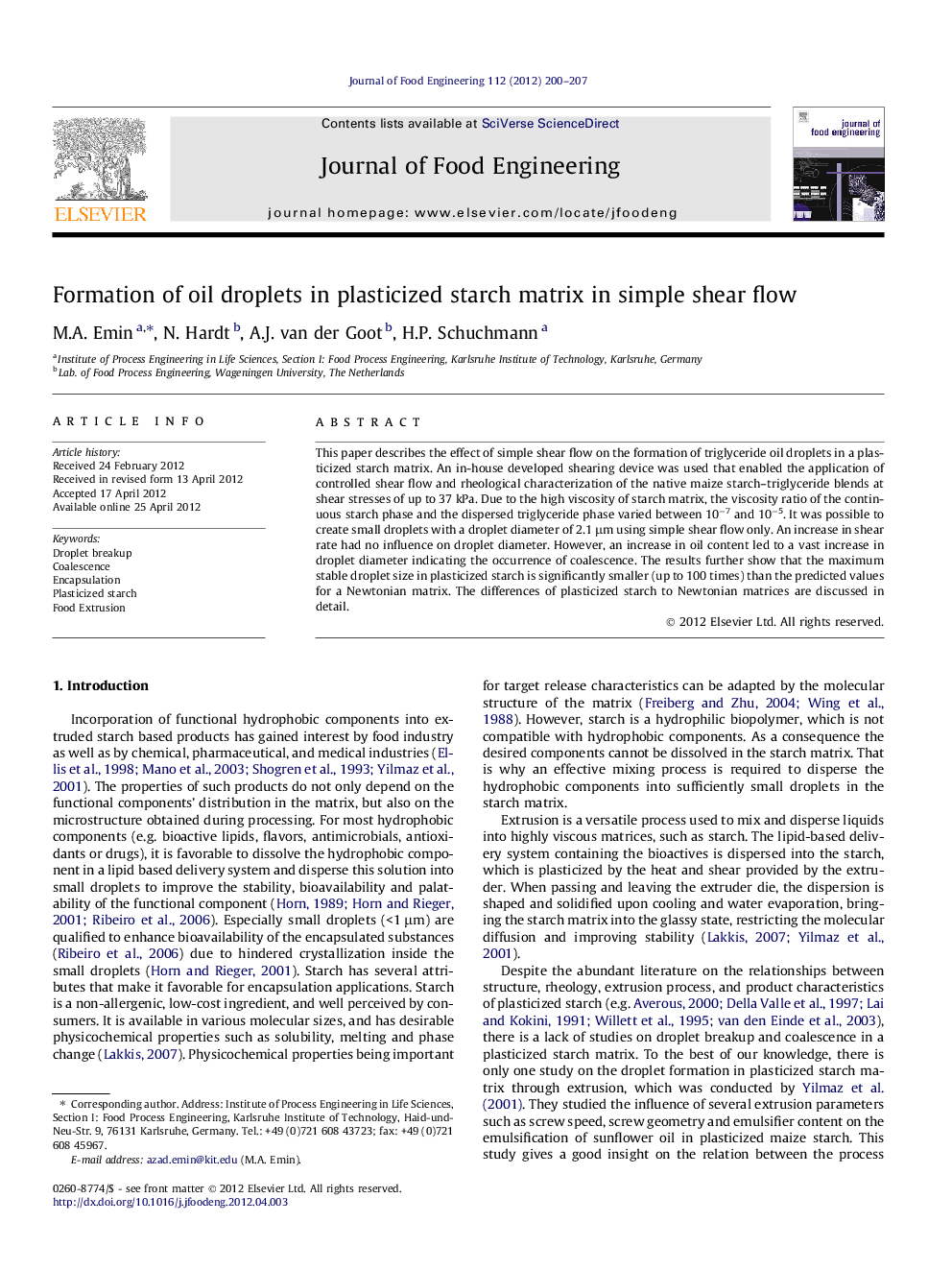| Article ID | Journal | Published Year | Pages | File Type |
|---|---|---|---|---|
| 223660 | Journal of Food Engineering | 2012 | 8 Pages |
This paper describes the effect of simple shear flow on the formation of triglyceride oil droplets in a plasticized starch matrix. An in-house developed shearing device was used that enabled the application of controlled shear flow and rheological characterization of the native maize starch–triglyceride blends at shear stresses of up to 37 kPa. Due to the high viscosity of starch matrix, the viscosity ratio of the continuous starch phase and the dispersed triglyceride phase varied between 10−7 and 10−5. It was possible to create small droplets with a droplet diameter of 2.1 μm using simple shear flow only. An increase in shear rate had no influence on droplet diameter. However, an increase in oil content led to a vast increase in droplet diameter indicating the occurrence of coalescence. The results further show that the maximum stable droplet size in plasticized starch is significantly smaller (up to 100 times) than the predicted values for a Newtonian matrix. The differences of plasticized starch to Newtonian matrices are discussed in detail.
► We examine the formation of oil droplets in a plasticized starch in shear flow. ► Increasing shear rate has no influence on droplet size at the investigated range. ► Increasing oil content leads to a vast increase in droplet size. ► The droplets are smaller than the predicted sizes for a Newtonian matrix. ► We discussed the differences of plasticized starch to Newtonian matrices.
